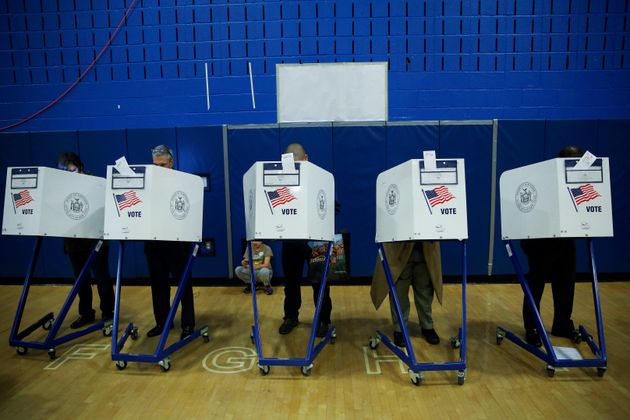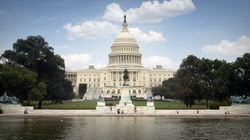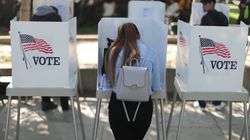
By the time Britain wakes up tomorrow morning, we will know the result of the 2018 US midterm elections.
US citizens will vote to select their preferred members of Congress, both for the House of Representatives and for the Senate, as well as state Governors and down-ballot positions such as local representatives and judges.
While Donald Trump is not on the ballot, the consequences for his presidency could be dramatic. Firstly, in a broad sense, many see the midterms as a referendum on the performance of the sitting president, so poor performance for the Republicans could be an ominous sign of what’s to come in 2020. But more significantly, polls suggest that Trump will lose control of the House of Representatives in today’s vote.
The Trump administration currently holds power in all branches of government – the presidency, the Congress and the Supreme Court – and if Democrats were to take back the House, they could put a pin in much of Trump’s agenda. Democrats could also make significant progress in the investigations of Trump’s possible collusion with Russia and of his tax returns. They could also, some have pointed out, introduce legislation to impeach the president.
So the stakes for today’s election are very high indeed, and current polling indicates that the most likely scenario is that Democrats will take back control of the House of Representatives and that Republicans will retain control of the Senate. Polling experts FiveThirtyEight currently project that there is an 86% chance – or six in seven – that Trump will lose control of the House.
This should have us preparing for a very different political landscape beginning tomorrow – but after the surprises of Brexit and Trump’s election in 2016, many are questioning the wisdom of election polling.
But the first thing to remember is that while Trump’s ascent to the presidency in 2016 was certainly a surprise, the polls were not, in fact, wildly inaccurate. Many news organisations expressed near-certainty that Hillary Clinton would win, but this was not what the numbers themselves showed at the time. As election day neared, the polls increasingly showed that Trump had a real chance of winning.
By election day, FiveThirtyEight gave Clinton a 71% chance of winning the election, leaving Trump with a 29% chance of winning. Many equated this figure with a certainty that Clinton would win, but the numbers themselves did not show this. It was not an error in polling; it was an error in how the polls were editorialised. Trump’s 29% chance is not an insignificant chance – it’s greater than a one in four chance of winning – but this was interpreted as a certain victory for Clinton. As editor in chief Nate Silver often puts it, would you get on a plane that had a 29% chance of crashing?
So the first problem is that we assumed Clinton would win even though the data was telling us it was not a sure thing. The second thing to note is that in terms of the popular vote, the polls were only off by 1.2% in 2016 – they estimated that Clinton would win the popular vote by 3.3%, she in fact won it by 2.1%. This is well within the margin of error from the perspective of polling experts.
So the first reason we can trust the polls in 2018 is because they weren’t actually wrong in 2016, at least as far as the popular vote is concerned.
The surprise, of course, was that Trump won the electoral college, and therefore the presidency. This came down to a marginal polling error in a handful of states that are key to winning the electoral college – Michigan, Wisconsin and Pennsylvania. Basically, what happened was the same slight error – the marginal underrepresentation of white working class voters favouring Trump – was replicated in a number of key districts located in states with large numbers of electoral college votes. This small error, along with the fact that some undecided voters unexpectedly voted for Trump, handed him the electoral college.
This has been accounted for by all major news organisations, and pollsters are now more likely to err on the side of caution and assume that small polling errors – errors that would be insignificant if they were isolated – may be replicated across different locations and elections and therefore may have an impact on the overall vote. So to the extent that the polls were wrong in 2016, polling models have been corrected. News organisations have learned from this unexpected replication of a slight polling error across a number of districts and have now worked this possibility into their models.
Secondly, the surprise election of Trump in 2016 was the result of a few thousand votes being cast for him unexpectedly in Midwestern states that won him the electoral college. If those few thousand votes had been cast anywhere else, we would never have seen a Trump. In the midterms, because there is no presidential election, there is no electoral college. So another reason we need not be concerned about surprises in today’s vote is that it was the idiosyncrasies of the US presidential election system that turned a marginal error into a surprise president in 2016, and this system does not apply to the midterms.
Of course it is possible that again, undecided voters will break for Trump and the Republican vote will be higher than expected in today’s midterm elections. It is also possible that there has been another minor polling error replicated across key districts that will swing the result (although this is not as likely in the absence of the electoral college). But each of these possibilities have been accounted for in pollsters’ projections that there is a six in seven chance that Democrats will take back the House – so I’d say it’s pretty likely this is what will happen.
An 86% chance is not a sure thing, but it’s a strong indicator of the most likely outcome. So despite getting burned by polls in 2016, I think it’s safe to say we will likely see a Democrat-controlled House of Representatives by tomorrow morning.


